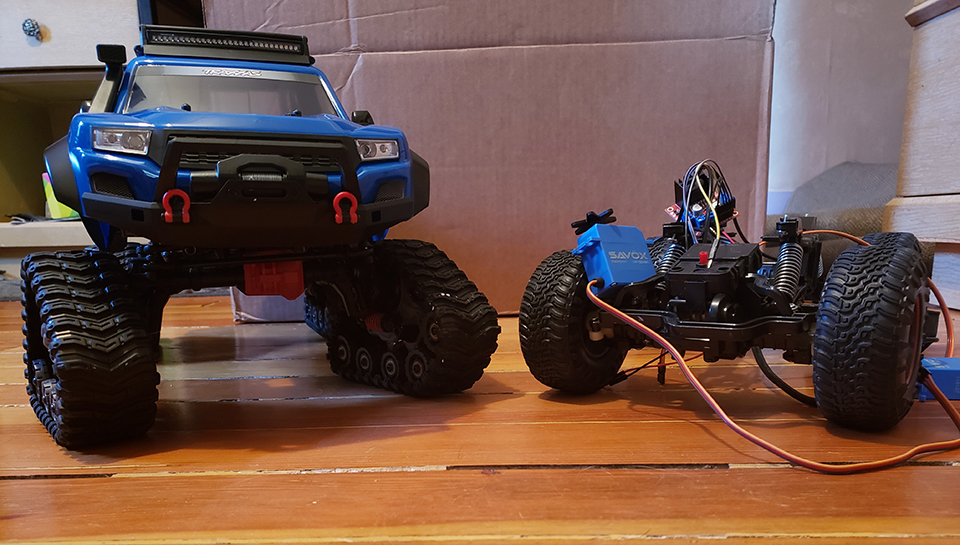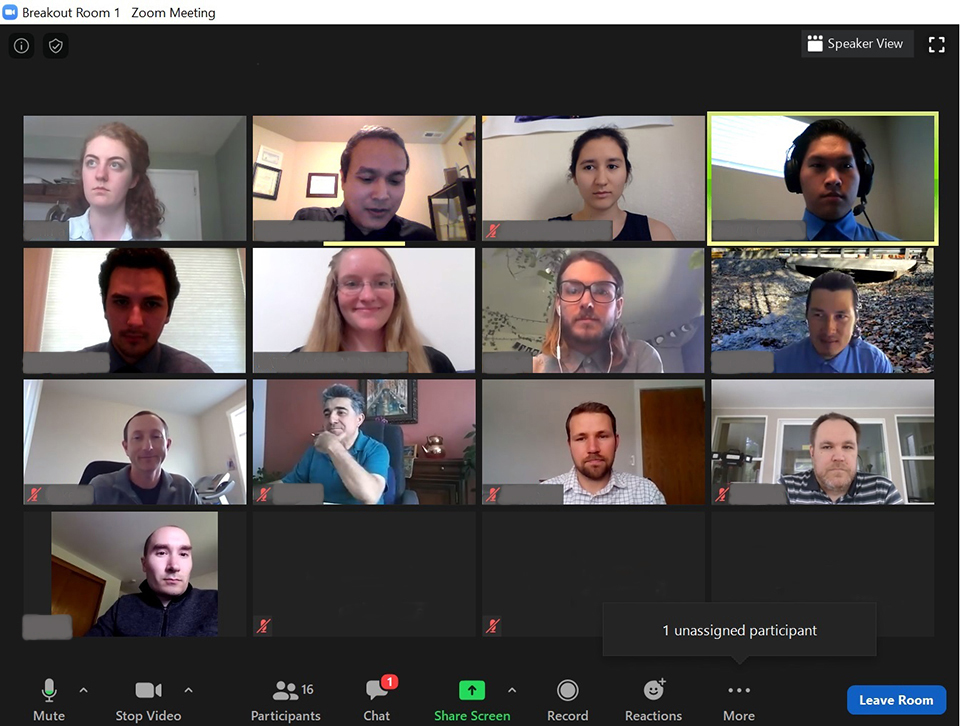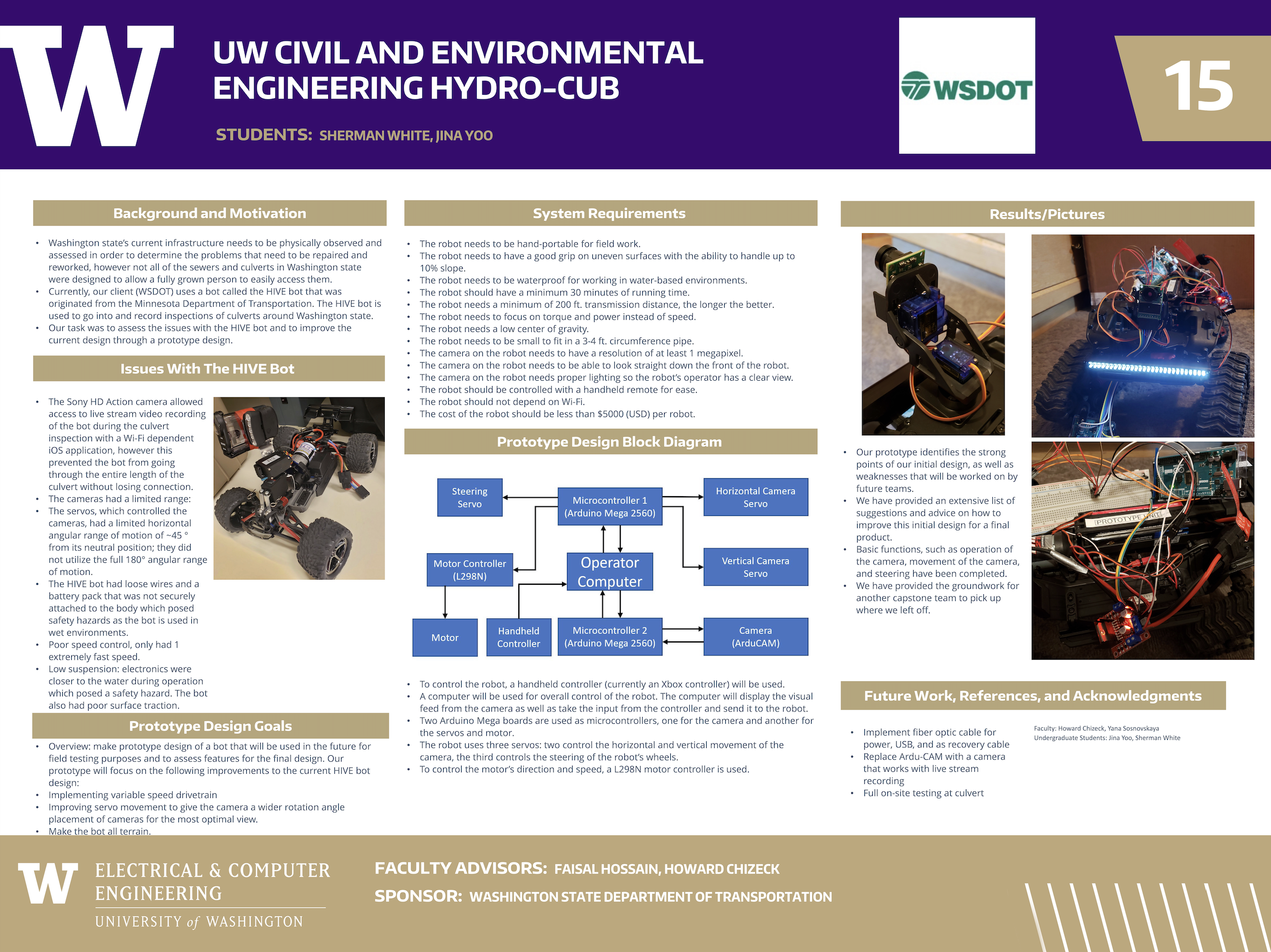Students embrace twice the problem-solving
For a highly collaborative capstone project that entails developing a remote-controlled sensing vehicle, moving the course online due to COVID-19 meant twice the opportunity to utilize problem-solving skills.
“The pandemic is a great opportunity to do things differently – challenge conventional approaches, use technology more and be more connected even during an era of physical distancing,” said professor Faisal Hossain, who taught the CEE 444 Environmental Engineering course this spring.

Built by ECE students Sherman White and Jina Yoo, the team’s first prototype (right) and more recent prototype (left), features a track mounted design for better traction in wet soil.
Electrical & Computer Engineering (UW ECE) students Sherman White and Jina Yoo were completing their capstone projects for the ENGINE program during spring quarter. They worked on their final capstone project in collaboration with UW’s Civil and Environmental Engineering (UW CEE) class and with the Washington State Department of Transportation (WSDOT). Together they prototyped a remote-controlled sensing vehicle that will be used to monitor confined spaces, such as culverts, bridges and sewers, which are difficult for humans to access for inspection. The prototype may eventually replace the current sensing vehicle employed by WSDOT, which suffers from issues such as unstable Internet connectivity, limited camera range and lack of speed control.
“Basically, ECE students were building this and CEE students were providing some high-level feedback on what it takes to make it relevant for real-world field conditions for a client working in civil engineering,” said Hossain. “It’s a great marriage of two branches of engineering.”
Prior to the start of spring quarter, Hossain outlined a contingency plan for the course, to create an online learning environment. The students, who were in separate online classes in each department, met online to exchange ideas and feedback about the prototype. Students from both departments also attended online meetings with WSDOT officials, who helped to mentor the students.

Students delivering an online mid-term presentation to WSDOT officials.
Rather than complete several prototypes by the end of the quarter, as originally planned, the students worked to finalize a smaller number of designs for their “Hydro-CUB (Compact Utility Bot).” Despite shipping delays for necessary parts, such as precision cameras and Arduino boards, the students completed the design of the first prototype, which continues to evolve.
“They worked to make Hydro-CUB as relevant for real-world conditions as possible,” Hossain says. “With the ongoing pandemic, we weren’t sure we would get all the way to the finish line as students were working from home and ordering parts took a long time, so it was very close.”
Check out White and Yoo’s final poster presentation for the 2020 ENGINE Showcase here.
adapted from article by Brooke Fisher | UW Civil & Environmental Engineering


